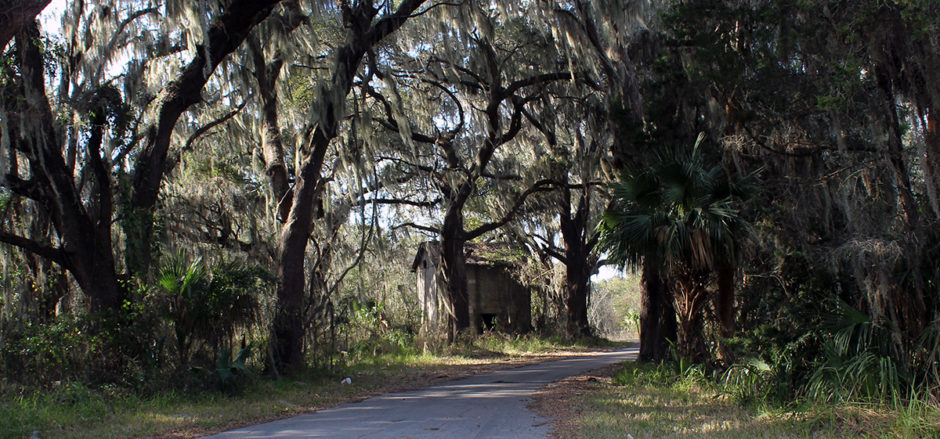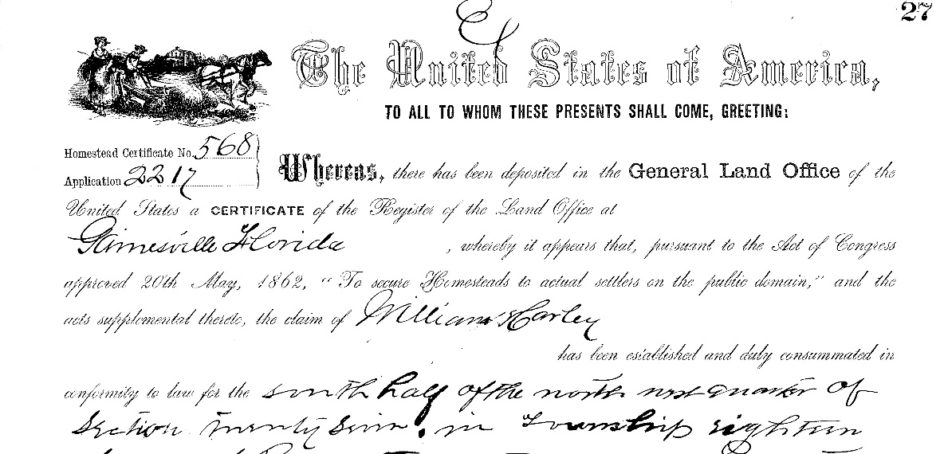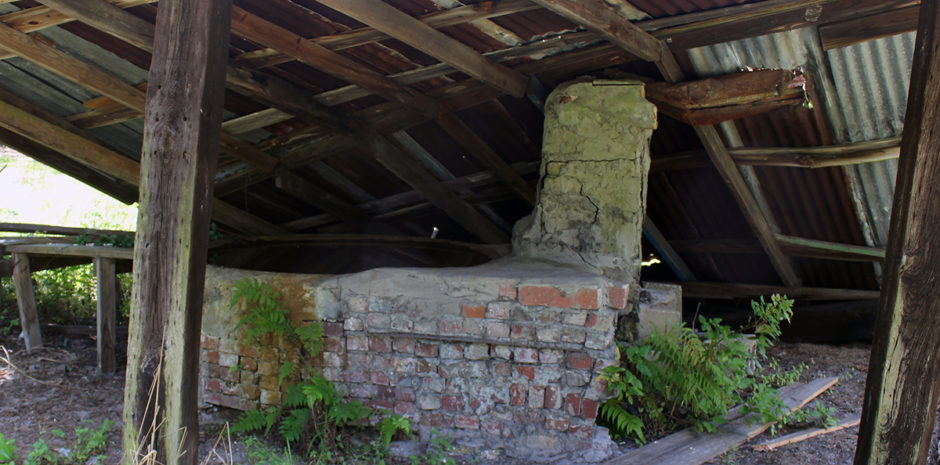DHI recently partnered with the nonprofit group Young Performing Artists (YPAs), Inc. to document the historic community of Royal, Florida. We conducted documentary research, architectural history fieldwork, and prepared a cultural resource assessment survey (CRAS) report. The project was funded by a Florida Division of Historic Preservation Small Matching Grant (Grant S1731). Royal remains a unique example of Florida’s rural African American communities. These communities were once common, but over the 20th century various economic and social pressures forced the majority of Florida’s African American population to urban settings. Royal survived this push, and even prospered. Part of this success was due to the residents’ economic self-reliance.

A concrete block tobacco barn, constructed in mid-20th century. Part of Royal’s unique agricultural history.
Royal was founded by free Blacks in the years following the Civil War. The first documented African Americans to own land in the area date to the 1870s. This coincided with widespread settlement of peninsular Florida, and it is likely that free Blacks lived here much earlier alongside the state’s maroon and Black Seminole populations. DHI conducted archival work, field surveys, and informant interviews to support a 300+ page report documenting the community’s architectural history.

A portion of the original GLO land patent granted to William Harley, one of Royal’s pioneering African American residents.
A large portion of the project was dedicated to delineating an area of significance based on Royal’s historical boundaries. Although many of the modern residents are descendants of 19th century African American landowners, documenting the surviving architectural resources is central to determining the community’s historical significance. Our work identified and added 31 new historic structures to the Florida Master Site File (FMSF). These include private residences, commercial structures, and agricultural buildings. A number of these structures are connected to various agricultural pursuits, some of which were practiced until quite recently.

Evidence of past sugar cane processing, a practice some of Royal’s residents keep alive today, albeit at smaller scales.
Royal represents a nationally significant place. The community’s history likely stretches to the mid-1800s (if not earlier). Royal’s documentable period of significance begins during Florida’s frontier days (1870s). The 20th century was a time of disenfranchisement for African Americans across the state of Florida, and yet Royal persisted. The architectural evidence standing today offers a thread connecting all of these times. The concrete tobacco barns are unique resources, with similar examples existing in South Carolina as early as 1925.
DHI recommended registering Royal as a Rural Historic Landscape (RHL). These are typically defined as a geographical place that has been historically used by a group of people, shaped by that use, or offer an example of continuity of land use patterns. The continued agricultural use of lands in Royal conform to this National Register of Historic Places (NRHP) category. RHLs may contain more than one historic landscape, and other kinds of historically significant properties, such as post offices, rail depots, schools, and so forth.
Interested in partnering on a similar project? Email us at info[at]digital-heritage.net.
